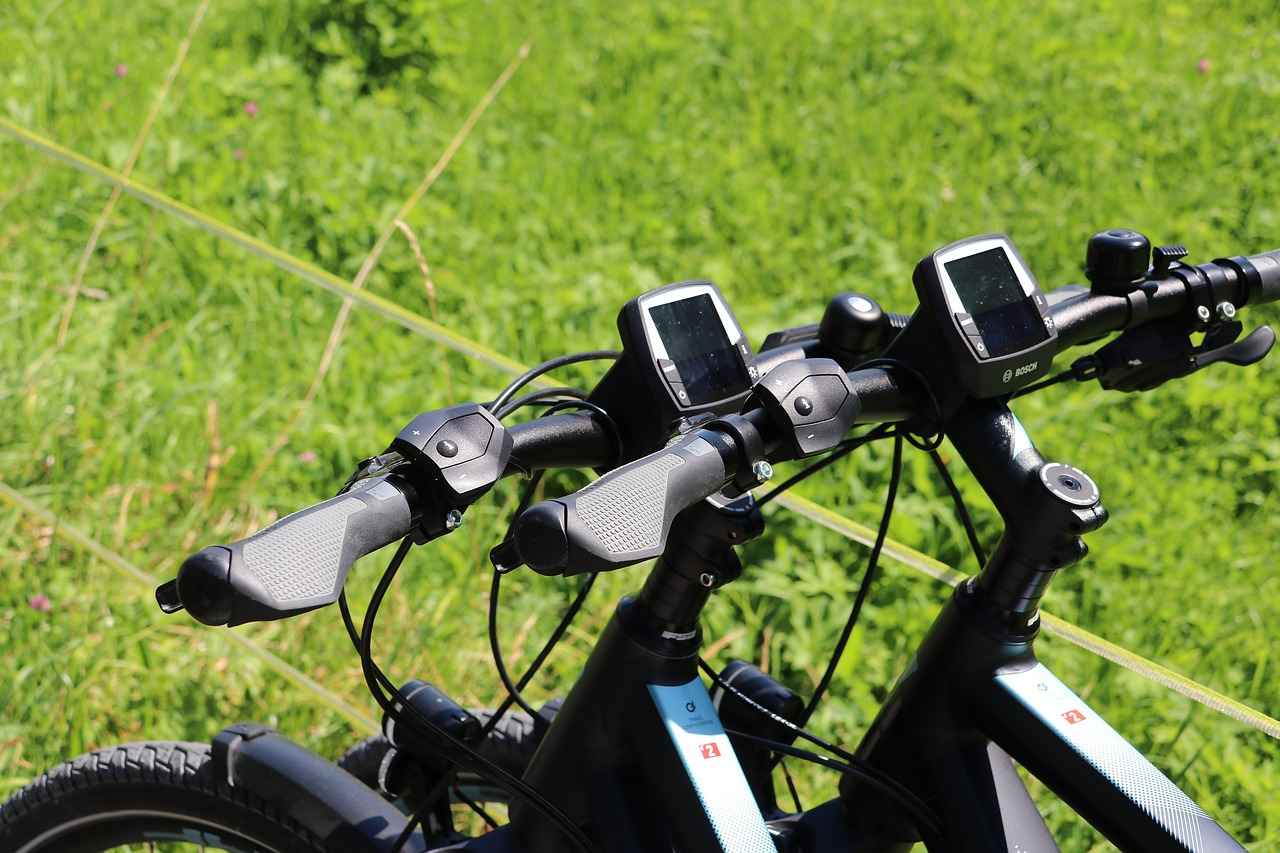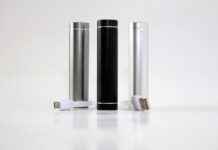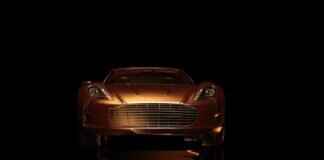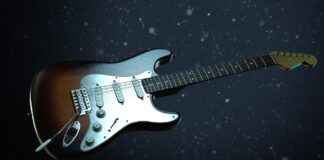This article provides an in-depth exploration of electric bike conversion kits, outlining their benefits, types, and installation processes to help you make informed decisions about upgrading your bicycle.
What is an Electric Bike Conversion Kit?
Electric bike conversion kits are designed to transform traditional bicycles into electric-powered bikes. Typically, these kits come equipped with a motor, battery, and all necessary components for a seamless upgrade, allowing cyclists to enjoy the benefits of electric biking without purchasing a new bike.
Benefits of Electric Bike Conversion Kits
- Increased Speed: Enjoy faster commutes and longer rides.
- Ease of Commuting: Tackle hills and longer distances with less effort.
- Eco-Friendly Transportation: Reduce your carbon footprint while enjoying the outdoors.
Types of Electric Bike Conversion Kits
There are several types of electric bike conversion kits available, including:
- Hub Motor Kits: Motors are located in the wheel hub, providing straightforward installation.
- Mid-Drive Kits: Installed at the bike’s crank for better performance on hills.
- Friction Drive Kits: Utilize friction to drive the bike, often more affordable but less common.
Choosing the Right Kit for Your Needs
Selecting the appropriate electric bike conversion kit depends on factors such as:
- Riding Style: Casual vs. serious cycling.
- Terrain: Flat roads vs. hilly areas.
- Budget: Prices can vary widely based on components and features.
Installation Process Overview
The installation of an electric bike conversion kit can be a DIY project, but it’s essential to follow the manufacturer’s instructions carefully. For those lacking mechanical skills, seeking professional help is advisable to ensure proper installation.
Maintenance Tips for Electric Bike Conversion Kits
Regular maintenance is crucial for the longevity and performance of your electric bike conversion kit. Key maintenance tasks include:
- Checking battery health regularly.
- Monitoring motor function.
- Ensuring overall bike condition is optimal.
Conclusion: Is an Electric Bike Conversion Kit Right for You?
Electric bike conversion kits offer an exciting opportunity to enhance your cycling experience. With benefits such as speed, convenience, and eco-friendliness, they represent a worthwhile investment for many cyclists looking to upgrade their biking experience.

What is an Electric Bike Conversion Kit?
Electric bike conversion kits are innovative solutions designed to transform traditional bicycles into electric-powered rides. These kits typically come equipped with essential components including a motor, battery, and various necessary accessories to ensure a seamless upgrade. This transformation allows cyclists to enjoy the benefits of electric biking without the need to purchase a completely new bike.
With the growing popularity of electric bikes, many enthusiasts are turning to conversion kits as a viable option. The ease of installation and the ability to retain the original bicycle frame are significant advantages. Most kits are designed for compatibility with a wide range of bicycle models, making them accessible to a large audience.
One of the primary components of an electric bike conversion kit is the motor. Motors can be categorized into different types, such as hub motors and mid-drive motors, each offering distinct advantages and disadvantages. Hub motors, for example, are located in the wheel hub and provide a straightforward installation process, while mid-drive motors are mounted at the crank, offering better weight distribution and performance on hills.
Another critical component is the battery. The capacity of the battery directly impacts the range and performance of the electric bike. Most conversion kits offer batteries with varying capacities, allowing users to select one that best suits their commuting needs.
Installation of these kits can often be done as a DIY project for those with mechanical skills, or it can be handled by professional bike shops for those who prefer expert assistance. Regardless of the installation method, it is essential to follow the manufacturer’s guidelines to ensure safety and functionality.
In conclusion, electric bike conversion kits provide an excellent opportunity for traditional cyclists to enjoy the numerous benefits of electric biking. By understanding the components and installation processes, riders can make informed decisions and enhance their biking experience.

Benefits of Electric Bike Conversion Kits
Converting your traditional bicycle into an electric bike using a conversion kit brings a host of benefits that cater to both casual riders and cycling enthusiasts. This transformation not only enhances your riding experience but also promotes a more sustainable lifestyle.
- Increased Speed: One of the most notable advantages of electric bike conversion kits is the ability to achieve higher speeds effortlessly. With the added power of an electric motor, riders can easily reach speeds of 20 mph or more, making it easier to keep up with traffic or travel longer distances in less time.
- Ease of Commuting: Electric bikes make commuting a breeze. The assistance from the motor reduces fatigue, allowing you to arrive at your destination feeling fresh. This is particularly beneficial for those who face long commutes or hilly terrains.
- Eco-Friendly Transportation: By opting for an electric bike, you contribute to a reduction in carbon emissions. Electric bikes are a greener alternative to cars, promoting sustainable transportation options that are both efficient and environmentally friendly.
- Accessibility for Everyone: Electric bikes can make cycling accessible to a wider audience, including those who may have physical limitations or are new to biking. The electric assistance helps level the playing field, allowing individuals of various fitness levels to enjoy cycling.
- Cost-Effective Alternative: Converting your existing bike with an electric kit can be more cost-effective than purchasing a brand-new electric bike. This option allows you to enhance your current bike without the hefty price tag of a new model.
In summary, the benefits of electric bike conversion kits are numerous and compelling. They not only enhance the cycling experience but also promote a healthier and more sustainable lifestyle.

Types of Electric Bike Conversion Kits
When considering an upgrade to an electric bike, it’s crucial to understand the different types of electric bike conversion kits available. Each type caters to various riding styles and preferences, ensuring that every cyclist can find a suitable option to enhance their biking experience. Below, we explore the most common types of conversion kits:
- Hub Motor Kits
Hub motor kits are designed with the motor integrated into the wheel hub. This type is favored for its ease of installation and the smooth ride it provides. Riders can choose between front hub motors, which offer better traction, and rear hub motors, which can help maintain balance.
- Mid-Drive Kits
Mid-drive kits are installed at the bike’s crank and are known for their superior weight distribution and efficiency, especially on steep terrains. They allow for better gear shifting and are ideal for mountain bikers and those who frequently ride uphill.
- Friction Drive Kits
Friction drive kits utilize a roller that presses against the bike’s tire to propel it forward. While they are less common than the other types, they are lightweight and can be easily removed, making them a good option for temporary use or those who want a flexible solution.
Each type of conversion kit has its unique features and benefits, making it essential for riders to assess their individual needs and riding styles before making a choice. Whether you prioritize ease of installation, performance on hills, or a lightweight solution, there’s a conversion kit tailored for you.
Hub Motor Kits
are an excellent choice for those looking to convert their traditional bicycles into electric bikes. These kits are particularly appealing due to their user-friendly installation and the smooth ride they provide. Positioned within the wheel hub, the motor in hub motor kits offers a unique advantage by maintaining the bike’s original frame integrity and design.
One of the standout features of hub motor kits is their low maintenance requirements. Unlike mid-drive systems, which involve more complex components, hub motors are self-contained and do not require frequent adjustments. This makes them an ideal option for casual riders who may not have extensive mechanical knowledge.
Additionally, hub motor kits are generally more affordable compared to mid-drive kits. This price point makes them accessible for a wider range of cyclists who want to enjoy the benefits of electric biking without breaking the bank. The ease of installation means that many users can successfully convert their bikes themselves, saving on labor costs.
However, it’s important to consider some limitations of hub motor kits. While they excel in providing a smooth and quiet ride on flat terrain, their performance may diminish on steep inclines. This can be a drawback for those who live in hilly areas or require more power for challenging rides. Additionally, the weight distribution of the bike can be affected, as the motor adds additional weight to the wheel, which may impact handling.
In conclusion, hub motor kits represent a popular and practical option for electric bike conversions. With their straightforward installation, low maintenance, and affordability, they are particularly suited for casual riders. However, potential buyers should weigh the benefits against the limitations, especially if they plan to tackle varied terrains. Overall, these kits provide a fantastic opportunity to embrace the electric biking trend while enjoying the freedom of cycling.
Advantages of Hub Motor Kits
Hub motor kits have gained significant popularity among electric bike enthusiasts, particularly for their user-friendly design and low maintenance requirements. These kits are ideal for casual riders and those new to the world of electric biking. Here, we delve deeper into the advantages of hub motor kits, highlighting why they are an excellent choice for many cyclists.
- Simplicity of Installation: One of the standout features of hub motor kits is their straightforward installation process. Most kits come with detailed instructions, allowing riders to convert their traditional bicycles into electric bikes without extensive mechanical knowledge.
- Low Maintenance: Hub motors are generally less prone to wear and tear compared to mid-drive systems. With fewer moving parts exposed to the elements, they require minimal upkeep, making them perfect for those who prefer a hassle-free riding experience.
- Steady Performance: Hub motor kits provide a smooth and consistent power delivery. This characteristic is particularly beneficial for urban commuting, where stop-and-go traffic is common. Riders can enjoy a reliable boost without the need for manual gear changes.
- Quiet Operation: Many hub motor kits operate quietly, allowing riders to enjoy nature and their surroundings without the distracting noise often associated with traditional bike motors. This feature enhances the overall biking experience.
- Affordability: Compared to other electric bike conversion options, hub motor kits tend to be more budget-friendly. This affordability makes them an attractive option for those looking to dip their toes into electric biking without breaking the bank.
- Versatility: Hub motors can be installed on various types of bicycles, including road bikes, mountain bikes, and cruisers. This versatility allows riders to choose a kit that suits their specific needs and riding style.
In conclusion, hub motor kits offer an array of advantages that cater to casual riders and newcomers to electric biking. Their simplicity, low maintenance, and affordability make them a compelling choice for anyone looking to enhance their cycling experience.
Disadvantages of Hub Motor Kits
While hub motor kits are a popular choice among electric bike enthusiasts for their simplicity and ease of installation, they come with certain drawbacks that potential buyers should consider. One of the primary concerns is the issue of weight distribution. Since the motor is located in the wheel hub, it can create an imbalance, particularly in bicycles that are not designed to accommodate such weight. This uneven distribution can lead to a less stable ride, especially during sharp turns or rough terrains.
Another significant disadvantage is their performance on steep inclines. Hub motors, while effective on flat surfaces, often struggle when faced with steep hills. This is primarily due to the fact that they lack the torque provided by mid-drive systems, which are mounted at the bike’s crank and can leverage the bike’s gears to deliver power more efficiently. As a result, riders may find themselves pedaling harder or even walking their bikes up steep grades, which can be frustrating and diminish the overall riding experience.
Additionally, hub motor kits can sometimes lead to increased tire wear. Due to the motor’s weight and the way power is applied, the rear wheel (or front, depending on the configuration) may experience more stress than usual, leading to faster degradation of the tires. This can result in more frequent replacements and added maintenance costs for the rider.
Lastly, hub motors typically offer less flexibility in terms of customization and upgrades compared to mid-drive systems. Once installed, the hub motor is often more challenging to replace or upgrade, limiting the rider’s options for future improvements.
In conclusion, while hub motor kits can be an attractive option for many cyclists, it is essential to weigh these disadvantages against their benefits. Understanding these factors can help you make a more informed decision when considering an electric bike conversion.
Mid-Drive Kits
are a popular choice among serious cyclists and mountain bikers due to their unique advantages. Installed at the bike’s crank, these kits provide enhanced weight distribution and significantly improve the bike’s performance on steep inclines. Unlike hub motor kits, mid-drive systems utilize the bike’s existing gears, allowing for better torque and efficiency when climbing hills.
One of the key benefits of mid-drive kits is their ability to maintain a lower center of gravity, which enhances stability and control during rides. This is particularly important for off-road cyclists who encounter varied terrains. The mid-drive system allows for a more natural riding experience, as it mimics the way traditional bicycles operate, making it easier to shift gears and tackle challenging landscapes.
Additionally, mid-drive kits tend to be lighter than hub motor kits, making them easier to handle and maneuver. This weight advantage is crucial for cyclists who prioritize performance and speed. Furthermore, mid-drive motors are typically more efficient, providing greater range per charge compared to their hub counterparts. This efficiency translates into longer rides without the need for frequent recharging.
However, it’s essential to consider that mid-drive kits can be more complex to install and may require more maintenance than hub motor systems. The additional wear and tear on the bike’s drivetrain can lead to increased maintenance costs over time. Therefore, prospective buyers should weigh these factors against their riding style and preferences.
In conclusion, mid-drive kits offer a compelling option for those looking to enhance their cycling experience. With superior performance on hills, better weight distribution, and a more natural feel, they have become a favored choice among dedicated cyclists. Whether you’re navigating city streets or tackling rugged trails, a mid-drive kit can significantly elevate your biking adventures.

Choosing the Right Kit for Your Needs
Choosing the Right Electric Bike Conversion Kit for Your Needs
When it comes to selecting the right electric bike conversion kit, it’s essential to consider various factors that influence your overall biking experience. This decision can ultimately enhance your rides, making them more enjoyable and efficient.
- Riding Style: Your riding style plays a significant role in determining the best conversion kit. If you prefer leisurely rides, a hub motor kit might be ideal due to its simplicity. However, if you enjoy challenging terrains or mountain biking, a mid-drive kit would offer better performance.
- Terrain: Consider the types of terrain you will be riding on. For flat urban areas, a lower-powered kit may suffice. Conversely, if you frequently tackle hills or rough trails, you’ll need a more powerful system that can handle inclines effectively.
- Budget: Electric bike conversion kits come in a wide range of prices. Set a budget that reflects your needs and the quality of components you desire. Remember, investing in a reliable kit can save you money on repairs and replacements in the long run.
- Desired Speed: Your speed preference will also dictate the type of kit you choose. Kits designed for higher speeds often come with more robust motors and batteries, which may increase the overall cost.
Additionally, compatibility with your existing bicycle is crucial. Ensure that the kit you choose is compatible with your bike’s frame and components. This will prevent any unnecessary modifications or complications during installation.
In conclusion, selecting the appropriate electric bike conversion kit requires careful consideration of your riding style, terrain, budget, and desired speed. By evaluating these factors, you can make an informed decision that enhances your biking experience and meets your specific needs.
Budget Considerations
are a critical aspect when selecting an electric bike conversion kit. With a wide range of options available, understanding how to navigate through the pricing landscape can significantly impact your decision-making process.
When embarking on your journey to convert your traditional bicycle into an electric one, it’s essential to set a realistic budget. Prices for electric bike conversion kits can vary dramatically, influenced by factors such as the brand, components, and features included in the kit. Here are some key points to consider:
- Entry-Level Kits: These kits typically range from $300 to $600. They are ideal for casual riders looking to dip their toes into the world of electric biking without making a significant investment.
- Mid-Range Kits: Ranging from $600 to $1,200, mid-range kits often offer better performance and more features, such as higher wattage motors and enhanced battery life, making them suitable for regular commuters.
- High-End Kits: These kits can cost over $1,200 and may include advanced features like smart technology integration, high-capacity batteries, and superior build quality, appealing to serious cyclists and enthusiasts.
In addition to the initial cost of the kit, it’s crucial to factor in installation costs if you choose to have the conversion done professionally. DIY installations can save you money, but they require a certain level of mechanical skill and the right tools.
Moreover, consider the long-term savings associated with electric biking, such as reduced commuting costs and lower maintenance expenses compared to traditional vehicles. This perspective can help justify the initial investment in a conversion kit.
In conclusion, taking the time to carefully evaluate your budget and the various options available will ultimately lead you to a conversion kit that not only fits your financial constraints but also meets your biking needs.
Compatibility with Your Bicycle
When considering the installation of an electric bike conversion kit, ensuring compatibility between the kit and your existing bicycle is of utmost importance. Every bicycle is designed with specific components, and a successful conversion often hinges on these details. Different bikes, whether they are road, mountain, or hybrid, may require unique components or modifications for a smooth integration of the conversion kit.
First and foremost, it is essential to identify the type of bicycle you own. For instance, a mountain bike may have different frame geometry compared to a road bike, which can affect the placement of the motor and battery. Additionally, the wheel size and brake system can also influence compatibility. Here are some key factors to consider:
- Frame Size and Design: The frame must accommodate the motor and battery without compromising the bike’s integrity.
- Wheel Size: Different kits are designed for specific wheel sizes; ensure your bike’s wheels match the kit specifications.
- Brake System: Some kits may require adjustments to the brake system, especially if you’re upgrading to a more powerful motor.
- Gear System: The compatibility with your existing gear system is crucial, particularly for mid-drive kits that rely on the bike’s gears for optimal performance.
Moreover, it is advisable to consult the manufacturer’s guidelines of the conversion kit. These documents often provide valuable insights into what types of bicycles are compatible and any necessary modifications needed for installation. If you are unsure, seeking advice from a professional bike technician can help clarify any doubts and ensure a successful conversion.
In conclusion, taking the time to assess the compatibility of your bicycle with the electric conversion kit can save you from potential issues down the line, ensuring a smooth and enjoyable riding experience.

Installation Process Overview
The installation of an electric bike conversion kit can be an exciting project, whether you choose to tackle it as a DIY endeavor or opt for professional assistance. Your decision will largely depend on your mechanical skills and the complexity of the kit you select.
For those with a penchant for hands-on projects, DIY installation can be a rewarding experience. Here are some key steps to consider:
- Read the Instructions: Always start by thoroughly reading the manufacturer’s instructions. Each kit may have unique requirements and specifications.
- Gather Necessary Tools: Ensure you have all the required tools on hand, such as wrenches, screwdrivers, and a torque wrench, to facilitate a smooth installation process.
- Prepare Your Bicycle: Before beginning, inspect your bicycle for any necessary repairs or adjustments. A well-maintained bike will make the installation easier.
- Follow Step-by-Step Guidelines: Adhere to the installation steps provided in the kit, which typically include mounting the motor, connecting the battery, and securing all components.
However, if you find the installation process daunting or lack the necessary tools, it is advisable to seek professional help. Here are some reasons why this might be the best choice:
- Expertise: Professional mechanics have the experience and knowledge to install the kit correctly, ensuring optimal performance.
- Time-Saving: Hiring a professional can save you time and frustration, allowing you to enjoy your newly converted bike sooner.
- Warranty Considerations: Some manufacturers may require professional installation to maintain the warranty on the conversion kit.
In conclusion, whether you choose to install the electric bike conversion kit yourself or seek professional assistance, understanding the process is crucial. A well-executed installation will enhance your biking experience and ensure the longevity of your electric bike.
DIY Installation Tips
DIY Installation Tips for Electric Bike Conversion KitsInstalling an electric bike conversion kit can be a rewarding experience, especially for those who enjoy hands-on projects. To ensure a successful installation, consider the following tips that will guide you through the process:
- Read the Manufacturer’s Instructions: Before you begin, take the time to thoroughly read the instructions provided by the manufacturer. Each kit may have specific requirements and steps that are crucial for proper installation.
- Gather the Right Tools: Having the right tools on hand can make the installation process much smoother. Common tools needed include a wrench set, screwdriver set, and possibly a torque wrench. Ensure you have everything ready to avoid interruptions.
- Prepare Your Bicycle: Make sure your bicycle is in good condition before starting the installation. Check the brakes, tires, and overall frame integrity. A well-maintained bike will provide a better foundation for the conversion kit.
- Work in a Clean, Well-Lit Area: Choose a clean and well-lit workspace to avoid losing small parts and to ensure you can see what you are doing clearly. Good lighting helps prevent mistakes during the installation.
- Take Your Time: Don’t rush the installation process. Take your time to ensure each component is installed correctly. If you feel uncertain about a step, consult the instructions or look for online tutorials.
- Test the Kit Before Final Assembly: Once you’ve installed the components, do a preliminary test to ensure everything is functioning correctly before finalizing the assembly. This can save you time in troubleshooting later on.
- Seek Help if Needed: If you encounter difficulties during the installation, don’t hesitate to ask for help. Online forums, local bike shops, or friends with experience can provide valuable assistance.
By following these tips, you can enhance your DIY experience and successfully transform your traditional bicycle into an electric bike, enjoying the benefits of modern cycling technology.
When to Seek Professional Help
Installing an electric bike conversion kit can be an exciting yet challenging endeavor. While many enthusiasts may be eager to take on the task themselves, there are certain circumstances where it is advisable to seek the expertise of a professional. Understanding when to reach out for help can not only save time but also ensure that your installation is executed flawlessly.
- Lack of Mechanical Skills: If you find yourself unfamiliar with bicycle mechanics or unsure about how to handle tools, it is best to consult a professional. They possess the necessary skills and experience to navigate the complexities of the installation process.
- Complexity of the Kit: Some conversion kits come with intricate components that may require specialized knowledge. If your kit includes advanced features or if it’s a mid-drive system, professional assistance can be invaluable.
- Time Constraints: If you have a busy schedule and cannot dedicate the necessary time to a DIY installation, visiting a local bike shop can be a wise choice. Professionals can often complete the installation more quickly and efficiently.
- Safety Concerns: Proper installation is crucial for the safety of your bike. If you are uncertain about any aspect of the installation, it is better to have a professional handle it. They can ensure that everything is secured and functioning correctly.
- Warranty Considerations: Some manufacturers require that installations be performed by certified professionals to maintain warranty coverage. If your kit has such stipulations, seeking professional help is essential.
In conclusion, while DIY installations can be rewarding, knowing when to seek professional help is crucial for ensuring a successful electric bike conversion. By doing so, you can enjoy your upgraded bike with confidence, knowing that it has been installed correctly and safely.

Maintenance Tips for Electric Bike Conversion Kits
To ensure your electric bike conversion kit remains in optimal condition, it is crucial to adopt a regular maintenance routine. This not only enhances the longevity of your kit but also ensures peak performance during your rides. Below are some essential maintenance tips to keep your electric bike running smoothly.
- Regular Battery Checks: The battery is the heart of your electric bike. Monitor its health by checking for any signs of swelling, corrosion, or damage. It’s advisable to keep the battery charged between 20% and 80% to prolong its lifespan.
- Motor Functionality: Pay attention to the motor’s performance. If you notice unusual noises or decreased power, it may require servicing. Regularly clean the motor area to prevent dirt buildup, which can hinder performance.
- Brake and Tire Maintenance: Just like a traditional bike, your electric bike’s brakes and tires need regular inspections. Ensure the brakes are responsive and that the tires are inflated to the recommended pressure for a safe and smooth ride.
- Wiring and Connections: Inspect the wiring and connections for any signs of wear or damage. Loose connections can lead to performance issues, so make sure everything is securely fastened.
- Overall Bike Condition: Regularly check the frame and components for any signs of wear and tear. Tighten bolts and screws as necessary to maintain structural integrity.
By following these maintenance tips, you can ensure that your electric bike conversion kit remains reliable and efficient, providing you with many enjoyable rides. Remember, a well-maintained bike not only performs better but also enhances your overall cycling experience.

Conclusion: Is an Electric Bike Conversion Kit Right for You?
In today’s fast-paced world, many individuals are seeking alternatives to traditional modes of transportation. Electric bike conversion kits have emerged as a popular solution, allowing cyclists to upgrade their existing bicycles into electric-powered machines. This transformation not only enhances the cycling experience but also promotes a more sustainable lifestyle.
Why Consider an Electric Bike Conversion Kit? The primary appeal of these kits lies in their ability to provide a significant boost in speed and efficiency. Whether you’re commuting to work, running errands, or enjoying a leisurely ride, an electric bike can make your journey faster and less strenuous. Additionally, the convenience of electric assistance means you can tackle longer distances or challenging terrains with ease.
Moreover, electric bikes are an eco-friendly option compared to traditional vehicles. By opting for an electric bike conversion, you’re not only investing in your health but also contributing to a reduction in carbon emissions. This makes electric bikes an attractive choice for environmentally conscious individuals.
Enhancing Your Cycling Experience With a conversion kit, you can customize your bike according to your specific needs. There are various types of kits available, each designed to cater to different riding styles and preferences. From hub motor kits that offer straightforward installation to mid-drive kits that deliver superior performance on hills, the options are plentiful.
Furthermore, the installation process can be a rewarding DIY project for those who enjoy hands-on tasks. However, if you prefer professional assistance, many bike shops offer installation services to ensure everything is set up correctly.
Ultimately, investing in an electric bike conversion kit is a decision that can significantly enhance your cycling experience. With the benefits of increased speed, convenience, and sustainability, these kits offer a compelling way to make biking more accessible and enjoyable. Whether you are a casual rider or a dedicated cyclist, an electric bike conversion kit could be the perfect upgrade for your bicycle.
Frequently Asked Questions
- What is an electric bike conversion kit?
An electric bike conversion kit is a set of components that allows you to transform a traditional bicycle into an electric bike. Typically, these kits include a motor, battery, and all necessary parts for installation, making it easier for you to enjoy the benefits of electric biking.
- How do I choose the right conversion kit for my bike?
Choosing the right electric bike conversion kit depends on several factors, such as your riding style, the terrain you’ll be tackling, your budget, and the desired speed. Consider these aspects carefully to ensure you find a kit that enhances your biking experience.
- Can I install an electric bike conversion kit myself?
Yes, many people opt for DIY installation of electric bike conversion kits. However, it’s essential to follow the manufacturer’s instructions closely and have the right tools. If you’re not confident in your mechanical skills, seeking help from a professional bike shop is a wise choice.
- What are the maintenance requirements for electric bike conversion kits?
Maintaining your electric bike conversion kit is key to its longevity and performance. Regularly check the battery health, motor function, and overall condition of your bike to ensure everything is running smoothly.
- Are hub motor kits better than mid-drive kits?
It really depends on your needs! Hub motor kits are simpler and low-maintenance, making them great for casual riders. Mid-drive kits, on the other hand, offer better weight distribution and performance on hills, catering to serious cyclists and mountain bikers. Choose based on your riding style!













